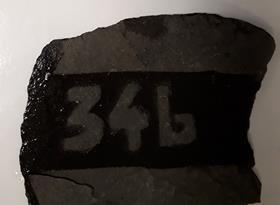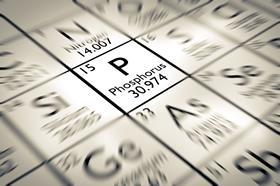Challenge your students to ‘escape’ and develop their problem-solving and practical skills along the way

The original Escape the classroom article describes an escape room where students solve chemistry-based puzzles as a group to reveal codes that open a locked box containing a reward. This article provides a few more escape room set-ups and six more puzzles for older students.
For more advanced students, the code could be a calculated answer such as a percentage yield, bond enthalpy or a value extrapolated from a calibration curve, for example. For an alternative to numerical answers, the answer to a puzzle could give the location to a hidden padlock key.
Materials
A cheaper and quicker alternative to buying multiple boxes and locks, and setting the combinations, is for students to enter the codes in an online form such as a Google form. If the code entered is correct, a new page for entering the code for the next puzzle is revealed. The final code can reveal the combination for a lock or the location of the key to a lock on a box. Another cheaper alternative to a box is to padlock a folder containing an envelope with the reward inside.

Puzzle 1 – Hydrophobic revelation
This puzzle can be used to start a discussion about the immiscibility of polar and non-polar substances. You will need a piece of slate rock, hydrophobic spray (shoe protector or waterproofing spray) and a paper template cut in the shape of a number. Cover the slate with the template and spray with the hydrophobic substance to create an area of slate that won’t get wet in the shape of the number. When students add water, the code is revealed as the wet slate turns darker and the water repelling properties of the sprayed chemical show the code.

Puzzle 2 – Word grid
In this puzzle, students answer a series of organic chemistry questions to reveal a hidden message that can be read vertically in shaded boxes. The message reveals the page of a textbook, which discloses a code. You could mark the code on the page using ink that fluoresces under light from a UV torch.
Puzzle 3 – Interweaved enigma
Students need to use their knowledge and skills from different areas of chemistry to deduce the code. They must name the salt produced from a neutralisation reaction, write the correct formula using valency method, calculate the formula mass and then perform a mole calculation to find the code.


Puzzle 4 – A question of balance
Students must insert the correct number of moles of reactants and products to balance a chemical equation. The inserted numbers reveal the code. You can match the difficulty of the equation to the age and stage of the pupils.

Puzzle 5 – Particle poser
This puzzle requires an understanding of nuclide notation. Information is given about an isotope of beryllium. The atomic number, mass number, number of neutrons and deduction of the ion charge are needed to obtain the four-digit code.

Puzzle 6 – Chemical conundrum
Students must solve a riddle that gives clues relating to an element, in this case phosphorus. The boiling point of phosphorus is the code for the lock. This can be found using chemistry data booklets placed beside the puzzles.
Downloads
Escape the classroom activity worksheet
Word, Size 0.23 mbEscape the classroom activity worksheet
PDF, Size 0.13 mb
Escape the classroom

Be inspired to design an escape room experience for students with these chemistry related puzzles
- 1
- 2
- 3
- 4
 Currently
reading
Currently
reading
Advanced challenges
- 6
- 7






















No comments yet